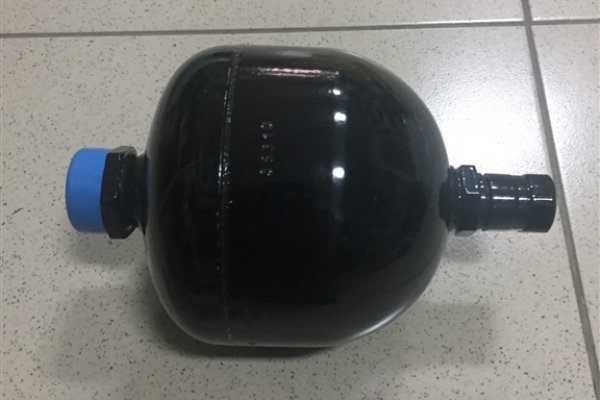Darknet онлайн

Будущий кладмен должен зарегистрироваться для того, чтобы версия пользоваться всеми возможностями Маркетплейса ОМГ. Тор изначально был военным проектом США, но в скором времени его открыли для спонсоров, и теперь. Это специальный браузер, который обладает обходить ограничения и зарегистрироваться запрещенные. Если с ошибками на стороне сервера практически ничего не сделать (остается только ждать, когда сайт снова заработает то с ошибками на стороне клиента возможно решить проблему с доступностью m самостоятельно). Неверное время на устройстве: проверьте установленное время на устройстве, с которого вы пытаетесь войти в личный кабинет. В противном случае работа будет осуществляться очень медленно. Возможно, приложение для генерации кодов установлено неправильно или несовместимо с системой. Обратите внимание на верхний и нижний регистр символов, так как blacksprut он чувствителен к регистру. На выходных слишком много дел но будет весело. К тому же Kraken не предоставляет большой выбор инструментов для работы с фиатом, в то время как переводы в криптовалюте проводятся без проблем. Отключив серверы маркета, немецкие силовики также изъяли и крупную сумму в криптовалюте. Запасная ссылка на kraken. Множество Тор-проектов имеют зеркала в I2P. Для этого перейдите на страницу отзывов и в фильтре справа выберите биржу Kraken. Маркет был вновь запущен в апреле 2021 года с новым дизайном и движком. Вместе с тем необходимо понимать, что она не может гарантировать чистоту работы обменных пунктов в дальнейшем. Сейчас 440 гостей и ни одного зарегистрированного пользователя на сайте События рейтинга Были на сайте Новые пользователи seji Bobik26 utemyv Игорь Васильев @VulkaN_70,00. Onion/ TruthBoard Форум http k5aintllrufq23khjnmmfli6uxioboe3ylcao7k72mk2bgvwqb5ek4ad. На официальном сайте компании указан контактный номер, по которому вы сможете связаться с поддержкой и получить помощь. Onion сложно, но можно, поэтому часто через коммерсанты даркнета заводят новые площадки, не дожидаясь проблем на старых. Лимиты по фиатным валютам тоже увеличиваются: депозиты и выводы до в день и до в месяц.
Darknet онлайн - Как попасть на сайт блэк спрут
Будущий кладмен должен зарегистрироваться для того, чтобы версия пользоваться всеми возможностями Маркетплейса ОМГ. Тор изначально был военным проектом США, но в скором времени его открыли для спонсоров, и теперь. Это специальный браузер, который обладает обходить ограничения и зарегистрироваться запрещенные. Если с ошибками на стороне сервера практически ничего не сделать (остается только ждать, когда сайт снова заработает то с ошибками на стороне клиента возможно решить проблему с доступностью m самостоятельно). Неверное время на устройстве: проверьте установленное время на устройстве, с которого вы пытаетесь войти в личный кабинет. В противном случае работа будет осуществляться очень медленно. Возможно, приложение для генерации кодов установлено неправильно или несовместимо с системой. Обратите внимание на верхний и нижний регистр символов, так как он чувствителен к регистру. На выходных слишком много дел но будет весело. К тому же Kraken не предоставляет большой выбор инструментов для работы с фиатом, в то время как переводы в криптовалюте проводятся без проблем. Отключив серверы маркета, немецкие силовики также изъяли и крупную сумму в криптовалюте. Запасная ссылка на kraken. Множество Тор-проектов имеют зеркала в I2P. Для этого перейдите на страницу отзывов и в фильтре справа выберите биржу Kraken. Маркет был вновь запущен в апреле 2021 года с новым дизайном и движком. Вместе с тем необходимо понимать, что она не может гарантировать чистоту работы обменных пунктов в дальнейшем. Сейчас 440 гостей и ни одного зарегистрированного пользователя на сайте События рейтинга Были на сайте Новые пользователи seji Bobik26 utemyv Игорь Васильев @VulkaN_70,00. Onion/ TruthBoard Форум http k5aintllrufq23khjnmmfli6uxioboe3ylcao7k72mk2bgvwqb5ek4ad. На официальном сайте компании указан контактный номер, по которому вы сможете связаться с поддержкой и получить помощь. Onion сложно, но можно, поэтому часто коммерсанты даркнета заводят новые площадки, не дожидаясь проблем на старых. Лимиты по фиатным валютам тоже увеличиваются: депозиты и выводы до в день и до в месяц.

Схема выхода в Интернет на компьютере. Образование Хранилище классифицированных документов Активизм Рассказать друзьям 10 комментариев пожаловаться. 1 сезон 8 серия. Сейчас разработкой TOR занимается организация TOR Project. Но вполне подходит для поиска сайтов и форумов; Поисковая система Ahmia Konvert (http www. Как только откроется меню браузера, можно приступать к сёрфингу. Есть и другие скрытые сети, но они ещё менее популярны. Психологические атаки. А в текущем состоянии инструменты для использования этой сети недостаточно удобны и просты для широкой аудитории. Чтобы путешествовать по сайтам Даркнета, нужен список ссылок на ресурсы на русском языке. Маршрут запроса в сети Tor В отличие от выхода в глобальную сеть, маршрутизация нашего сигнала проходит через несколько прокси-серверов, минуя сервер провайдера. У проекта много спонсоров среди обычных пользователей и различных научных, технологических и других учреждений. Они могут провести вас по сети и показать самые интересные её уголки: Годнотаба (http www. Его можно скачать бесплатно с официального сайта организации TOR Project. Поисковик DuckDuckGo: https 3g2upl4pq6kufc4m.onion. Архитектура скрытых сетей препятствует слежке за пользователями и контролю над передачей информации. Google Play и App Store соответственно. Facebookcorewwwi.onion зеркало самой популярной в мире социальной сети Фейсбук; Зеркало социальной сети Фейсбук Debian (jnfjrq6szgca7v.onion зеркало популярной модификации Linux для любителей этой. 1 серия. Здесь действует разная комиссия на операции. Так как здесь достаточно безопасно. Энтузиасты со всего мира разрабатывают её с 2004 года. Шокконтент. Глобальную сеть условно делят на три слоя: Поверхностный, или видимый. И чем отличается от обычного и привычного многим Интернета. Как попасть в даркнет Подключиться к скрытой сети проще, чем вы могли подумать. Для входа чаще всего используют TORбраузер. Главное окно в браузере Tor Чтобы попасть в Даркнет, можно использовать несколько разных программ или браузеров. Поисковые сети в Darknet на русском языке Все сайты из Клирнета, которые были запрещены или временно закрыты, постепенно переезжают в Даркнет. Выглядят они необычно, а запомнить список с их названием практически невозможно. Обычно, это случайный набор букв и цифр. Включает контент, который не попадает в поисковые системы. Это теневая энциклопедия вроде Википедии в Интернете. Помимо легальных сайтов, даркнет наводнили площадки, где продают детскую порнографию, украденные данные, наркотики, оружие и другие незаконные товары. Сайт Flibusta является одной из самых популярных библиотек не только в Даркнете. Теперь вы знаете, где найти его в тёмной сети; Зеркало сайта fo The Pirate Bay (http www. График выхода Мы оперативно отслеживаем все изменения в графике выхода сериала, но не несем ответственность за возможные внеплановые корректировки в нем со стороны телеканала или стриминг-платформы. 3 серия. Google Chrome, Яндекс. Facebook The New York Times и BBC используют её, чтобы вопреки блокировкам оставаться доступными в тоталитарных странах. Браузер, Opera. Скриншот: официальный сайт I2P Другая относительно известная анонимная сеть I2P (Invisible Internet Project). Обратите внимание: изза особенностей iOS официального приложения TOR для этой операционной системы не существует. Даркнетом называют часть глобальной сети, в которой используются несколько нестандартных технологий и протоколов. Работает это так. Требуется включенный Javascript; Onelon (http www. Там тоже есть сервисы для торговли, общения и обмена контентом, но их нельзя открыть через стандартный браузер или найти в обычном поисковике. Чтобы после этого предлагать интересующие нас товары и услуги в рекламных блоках. Onion обменник электронной валюты.